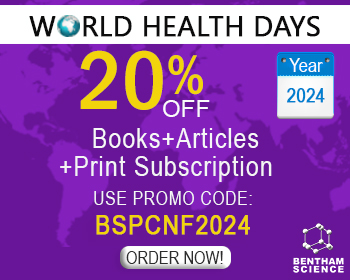Abstract
Treatment options for effective treatment of cancer with minimum off-target effects and maximum clinical outcomes have remained overarching goals in the clinical oncology. Vitamin C has remained in the shadows of controversy since the past few decades; burgeoning evidence has started to shed light on wide-ranging anticancer effects exerted by Vitamin C to induce apoptosis in drug-resistant cancer cells, inhibit uncontrolled proliferation of the cancer cells and metastatic spread. Landmark achievements in molecular oncology have ushered in a new era, and researchers have focused on the identification of oncogenic pathways regulated by Vitamin C in different cancers. However, there are visible knowledge gaps in our understanding related to the ability of Vitamin C to modulate a myriad of transduction cascades. There are scattered pieces of scientific evidence about promising potential of Vitamin C to regulate JAK-STAT, TGF/SMAD, TRAIL and microRNAs in different cancers. However, published data is insufficient and needs to be investigated comprehensively to enable basic and clinical researchers to reap full benefits and promote result-oriented transition of Vitamin C into various phases of clinical trials. In this review, we will emphasize on available evidence related to the regulation of oncogenic cell signaling pathways by Vitamin C in different cancers. We will also highlight the conceptual gaps, which need detailed and cutting-edge research.
Keywords: Vitamin C, Anticancer, Signaling pathways, Protein network, Clinical trials, Clinical oncology.
[http://dx.doi.org/10.1016/0009-2797(74)90019-2] [PMID: 4430016]
[http://dx.doi.org/10.1073/pnas.73.10.3685] [PMID: 1068480]
[http://dx.doi.org/10.1073/pnas.75.9.4538] [PMID: 279931]
[http://dx.doi.org/10.1056/NEJM197909273011303] [PMID: 384241]
[http://dx.doi.org/10.1056/NEJM198501173120301] [PMID: 3880867]
[http://dx.doi.org/10.1038/s41568-019-0135-7] [PMID: 30967651]
[http://dx.doi.org/10.3390/molecules24030453] [PMID: 30695991]
[http://dx.doi.org/10.1042/BST20180169] [PMID: 30301842]
[PMID: 31505989]
[http://dx.doi.org/10.1172/JCI98747] [PMID: 30702441]
[http://dx.doi.org/10.15252/embr.201745401] [PMID: 29959161]
[http://dx.doi.org/10.3389/fonc.2018.00574] [PMID: 30555801]
[http://dx.doi.org/10.1002/ijc.32658] [PMID: 31472018]
[http://dx.doi.org/10.1016/j.canlet.2017.03.039] [PMID: 28385602]
[http://dx.doi.org/10.1016/j.freeradbiomed.2016.03.009] [PMID: 27012422]
[http://dx.doi.org/10.1016/j.jnutbio.2018.12.001] [PMID: 30616065]
[http://dx.doi.org/10.1016/j.tranon.2019.10.017] [PMID: 31901552]
[http://dx.doi.org/10.1038/nrm3589] [PMID: 23698584]
[http://dx.doi.org/10.1172/JCI129317] [PMID: 31310587]
[http://dx.doi.org/10.1002/ijc.29061] [PMID: 24996057]
[PMID: 30655813]
[http://dx.doi.org/10.2147/OTT.S222702] [PMID: 31571901]
[http://dx.doi.org/10.3390/nu11122997] [PMID: 31817810]
[http://dx.doi.org/10.1038/nm.3562] [PMID: 24813251]
[http://dx.doi.org/10.1038/s41419-019-1407-6] [PMID: 30792387]
[http://dx.doi.org/10.1038/s41589-019-0306-6] [PMID: 31209350]
[http://dx.doi.org/10.1038/nrc.2017.28] [PMID: 28536452]
[http://dx.doi.org/10.21873/anticanres.11238] [PMID: 27919962]
[http://dx.doi.org/10.3892/ol.2019.10686] [PMID: 31516599]
[http://dx.doi.org/10.1007/s10495-006-0475-0] [PMID: 17031493]
[http://dx.doi.org/10.1038/s41598-018-23714-7] [PMID: 29593282]
[http://dx.doi.org/10.1016/j.ebiom.2019.04.006] [PMID: 30975544]
[http://dx.doi.org/10.1016/j.ccell.2018.03.022]
[http://dx.doi.org/10.1186/1471-2407-13-253] [PMID: 23697596]
[http://dx.doi.org/10.1002/jbt.21594] [PMID: 25130429]
[http://dx.doi.org/10.7150/thno.35219] [PMID: 31285773]
[http://dx.doi.org/10.1007/s11033-019-04598-w] [PMID: 30694453]
[http://dx.doi.org/10.1093/carcin/bgt026] [PMID: 23492819]
[http://dx.doi.org/10.7754/Clin.Lab.2015.150518] [PMID: 27012032]
[http://dx.doi.org/10.7150/thno.33783] [PMID: 31281544]
[http://dx.doi.org/10.7150/thno.35378] [PMID: 31754384]
[http://dx.doi.org/10.1007/s13402-019-00474-8] [PMID: 31617161]
[http://dx.doi.org/10.1073/pnas.1908158117] [PMID: 31911474]
[http://dx.doi.org/10.7326/0003-4819-140-7-200404060-00010] [PMID: 15068981]
[http://dx.doi.org/10.1186/s13148-019-0739-5] [PMID: 31623675]
[PMID: 3088077]



























